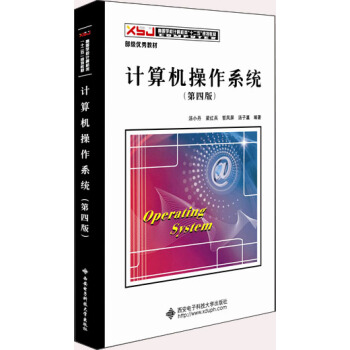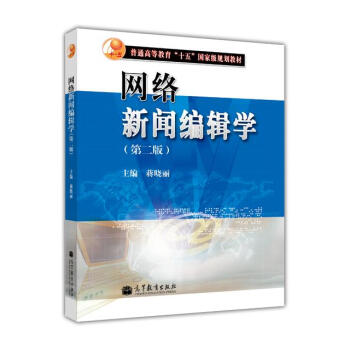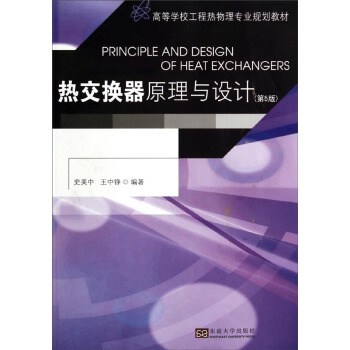![計算機視覺――一種現代方法(第二版)(英文版) [Computer Vision: A Modern Approach,Second Edition]](https://pic.windowsfront.com/12125621/5962e81fN2ef6393c.jpg)

具體描述
編輯推薦
適讀人群 :本書可作為計算機幾何學、計算機圖形學、圖像處理、模式識彆、機器人學等專業高年級本科生和研究生的雙語教材或參考書,也可供從事相關領域研究的工程技術人員參考閱讀。*數學知識簡潔,清晰
*關於現代特徵的內容
*現代圖像編輯技術以及物體識彆技術
內容簡介
計算機視覺是研究如何使人工係統從圖像或多維數據中"感知”的科學。本書是計算機視覺領域的經典教材,內容涉及幾何攝像模型、光照及陰影、顔色、綫性濾波、局部圖像特徵、紋理、立體視覺運動結構、聚類分割、組閤與模型擬閤、跟蹤、配準、平滑錶麵與輪廓、深度數據、圖像分類、對象檢測與識彆、基於圖像的建模與渲染、人形研究、圖像搜索與檢索、優化技術等內容。與前一版相比,本書簡化瞭部分主題,增加瞭應用示例,重寫瞭關於現代特性的內容,詳述瞭現代圖像編輯技術與對象識彆技術。
作者簡介
David Forsyth:1984年於威特沃特斯蘭德大學取得瞭電氣工程學士學位,1986年取得電氣工程碩士學位,1989年於牛津貝列爾學院取得博士學位。之後在艾奧瓦大學任教3年,在加州大學伯剋利分校任教10年,再後在伊利諾伊大學任教。2000年和2001年任IEEE計算機視覺與模式識彆會議(CVPR)執行副主席,2006年任CVPR常任副主席,2008年任歐洲計算機視覺會議執行副主席,是所有關於計算機視覺主要國際會議的常任執委會成員。他為SIGGRAPH執委會工作瞭5期。2006年獲IEEE技術成就奬,2009年成為IEEE會士。
Jean Ponce:於1988年在巴黎奧賽大學獲得計算機科學博士學位。1990年至2005年,作為研究科學傢分彆供職於法國國傢信息研究所、麻省理工學院人工智能實驗室和斯坦福大學機器人實驗室;1990年至2005年,供職於伊利諾伊大學計算機科學係。2005年開始,成為法國巴黎高等師範學校教授。
目錄
i image formation 11 geometric camera models 3
1.1 image formation 4
1.1.1 pinhole perspective 4
1.1.2 weak perspective 6
1.1.3 cameras with lenses 8
1.1.4 the human eye 12
1.2 intrinsic and extrinsic parameters 14
1.2.1 rigid transformations and homogeneous coordinates 14
1.2.2 intrinsic parameters 16
1.2.3 extrinsic parameters 18
1.2.4 perspective projection matrices 19
1.2.5 weak-perspective projection matrices 20
1.3 geometric camera calibration 22
1.3.1 alinear approach to camera calibration 23
1.3.2 anonlinear approach to camera calibration 27
1.4 notes 29
2 light and shading 32
2.1 modelling pixel brightness 32
2.1.1 reflection at surfaces 33
2.1.2 sources and their effects 34
2.1.3 the lambertian+specular model 36
2.1.4 area sources 36
2.2 inference from shading 37
2.2.1 radiometric calibration and high dynamic range images 38
2.2.2 the shape of specularities 40
2.2.3 inferring lightness and illumination 43
2.2.4 photometric stereo: shape from multiple shaded images 46
2.3 modelling interreflection 52
2.3.1 the illumination at a patch due to an area source 52
2.3.2 radiosity and exitance 54
2.3.3 an interreflection model 55
2.3.4 qualitative properties of interreflections 56
2.4 shape from one shaded image 59
2.5 notes 61
3 color 68
3.1 human color perception 68
3.1.1 color matching 68
3.1.2 color receptors 71
3.2 the physics of color 73
3.2.1 the color of light sources 73
3.2.2 the color of surfaces 76
3.3 representing color 77
3.3.1 linear color spaces 77
3.3.2 non-linear color spaces 83
3.4 amodel of image color 86
3.4.1 the diffuse term 88
3.4.2 the specular term 90
3.5 inference from color 90
3.5.1 finding specularities using color 90
3.5.2 shadow removal using color 92
3.5.3 color constancy: surface color from image color 95
3.6 notes 99
ii early vision: just one image 105
4 linear filters 107
4.1 linear filters and convolution 107
4.1.1 convolution 107
4.2 shift invariant linear systems 112
4.2.1 discrete convolution 113
4.2.2 continuous convolution 115
4.2.3 edge effects in discrete convolutions 118
4.3 spatial frequency and fourier transforms 118
4.3.1 fourier transforms 119
4.4 sampling and aliasing 121
4.4.1 sampling 122
4.4.2 aliasing 125
4.4.3 smoothing and resampling 126
4.5 filters as templates 131
4.5.1 convolution as a dot product 131
4.5.2 changing basis 132
4.6 technique: normalized correlation and finding patterns 132
4.6.1 controlling the television by finding hands by normalized
correlation 133
4.7 technique: scale and image pyramids 134
4.7.1 the gaussian pyramid 135
4.7.2 applications of scaled representations 136
4.8 notes 137
5 local image features 141
5.1 computing the image gradient 141
5.1.1 derivative of gaussian filters 142
5.2 representing the image gradient 144
5.2.1 gradient-based edge detectors 145
5.2.2 orientations 147
5.3 finding corners and building neighborhoods 148
5.3.1 finding corners 149
5.3.2 using scale and orientation to build a neighborhood 151
5.4 describing neighborhoods with sift and hog features 155
5.4.1 sift features 157
5.4.2 hog features 159
5.5 computing local features in practice 160
5.6 notes 160
6 texture 164
6.1 local texture representations using filters 166
6.1.1 spots and bars 167
6.1.2 from filter outputs to texture representation 168
6.1.3 local texture representations in practice 170
6.2 pooled texture representations by discovering textons 171
6.2.1 vector quantization and textons 172
6.2.2 k-means clustering for vector quantization 172
6.3 synthesizing textures and filling holes in images 176
6.3.1 synthesis by sampling local models 176
6.3.2 filling in holes in images 179
6.4 image denoising 182
6.4.1 non-local means 183
6.4.2 block matching 3d (bm3d) 183
6.4.3 learned sparse coding 184
6.4.4 results 186
6.5 shape from texture 187
6.5.1 shape from texture for planes 187
6.5.2 shape from texture for curved surfaces 190
6.6 notes 191
iii early vision: multiple images 195
7 stereopsis 197
7.1 binocular camera geometry and the epipolar constraint 198
7.1.1 epipolar geometry 198
7.1.2 the essential matrix 200
7.1.3 the fundamental matrix 201
7.2 binocular reconstruction 201
7.2.1 image rectification 202
7.3 human stereopsis 203
7.4 local methods for binocular fusion 205
7.4.1 correlation 205
7.4.2 multi-scale edge matching 207
7.5 global methods for binocular fusion 210
7.5.1 ordering constraints and dynamic programming 210
7.5.2 smoothness and graphs 211
7.6 using more cameras 214
7.7 application: robot navigation 215
7.8 notes 216
8 structure from motion 221
8.1 internally calibrated perspective cameras 221
8.1.1 natural ambiguity of the problem 223
8.1.2 euclidean structure and motion from two images 224
8.1.3 euclidean structure and motion from multiple images 228
8.2 uncalibrated weak-perspective cameras 230
8.2.1 natural ambiguity of the problem 231
8.2.2 affine structure and motion from two images 233
8.2.3 affine structure and motion from multiple images 237
8.2.4 from affine to euclidean shape 238
8.3 uncalibrated perspective cameras 240
8.3.1 natural ambiguity of the problem 241
8.3.2 projective structure and motion from two images 242
8.3.3 projective structure and motion from multiple images 244
8.3.4 from projective to euclidean shape 246
8.4 notes 248
iv mid-level vision 253
9 segmentation by clustering 255
9.1 human vision: grouping and gestalt 256
9.2 important applications 261
9.2.1 background subtraction 261
9.2.2 shot boundary detection 264
9.2.3 interactive segmentation 265
9.2.4 forming image regions 266
9.3 image segmentation by clustering pixels 268
9.3.1 basic clustering methods 269
9.3.2 the watershed algorithm 271
9.3.3 segmentation using k-means 272
9.3.4 mean shift: finding local modes in data 273
9.3.5 clustering and segmentation with mean shift 275
9.4 segmentation, clustering, and graphs 277
9.4.1 terminology and facts for graphs 277
9.4.2 agglomerative clustering with a graph 279
9.4.3 divisive clustering with a graph 281
9.4.4 normalized cuts 284
9.5 image segmentation in practice 285
9.5.1 evaluating segmenters 286
9.6 notes 287
10 grouping and model fitting 290
10.1 the hough transform 290
10.1.1 fitting lines with the hough transform 290
10.1.2 using the hough transform 292
10.2 fitting lines and planes 293
10.2.1 fitting a single line 294
10.2.2 fitting planes 295
10.2.3 fitting multiple lines 296
10.3 fitting curved structures 297
10.4 robustness 299
10.4.1 m-estimators 300
10.4.2 ransac: searching for good points 302
10.5 fitting using probabilistic models 306
10.5.1 missing data problems 307
10.5.2 mixture models and hidden variables 309
10.5.3 the em algorithm for mixture models 310
10.5.4 difficulties with the em algorithm 312
10.6 motion segmentation by parameter estimation 313
10.6.1 optical flow and motion 315
10.6.2 flow models 316
10.6.3 motion segmentation with layers 317
10.7 model selection: which model is the best fit? 319
10.7.1 model selection using cross-validation 322
10.8 notes 322
11 tracking 326
11.1 simple tracking strategies 327
11.1.1 tracking by detection 327
11.1.2 tracking translations by matching 330
11.1.3 using affine transformations to confirm a match 332
11.2 tracking using matching 334
11.2.1 matching summary representations 335
11.2.2 tracking using flow 337
11.3 tracking linear dynamical models with kalman filters 339
11.3.1 linear measurements and linear dynamics 340
11.3.2 the kalman filter 344
11.3.3 forward-backward smoothing 345
11.4 data association 349
11.4.1 linking kalman filters with detection methods 349
11.4.2 key methods of data association 350
11.5 particle filtering 350
11.5.1 sampled representations of probability distributions 351
11.5.2 the simplest particle filter 355
11.5.3 the tracking algorithm 356
11.5.4 a workable particle filter 358
11.5.5 practical issues in particle filters 360
11.6 notes 362
v high-level vision 365
12 registration 367
12.1 registering rigid objects 368
12.1.1 iterated closest points 368
12.1.2 searching for transformations via correspondences 369
12.1.3 application: building image mosaics 370
12.2 model-based vision: registering rigid objects with projection 375
12.2.1 verification: comparing transformed and rendered source
to target 377
12.3 registering deformable objects 378
12.3.1 deforming texture with active appearance models 378
12.3.2 active appearance models in practice 381
12.3.3 application: registration in medical imaging systems 383
12.4 notes 388
13 smooth surfaces and their outlines 391
13.1 elements of differential geometry 393
13.1.1 curves 393
13.1.2 surfaces 397
13.2 contour geometry 402
13.2.1 the occluding contour and the image contour 402
13.2.2 the cusps and inflections of the image contour 403
13.2.3 koenderink’s theorem 404
13.3 visual events: more differential geometry 407
13.3.1 the geometry of the gauss map 407
13.3.2 asymptotic curves 409
13.3.3 the asymptotic spherical map 410
13.3.4 local visual events 412
13.3.5 the bitangent ray manifold 413
13.3.6 multilocal visual events 414
13.3.7 the aspect graph 416
13.4 notes 417
14 range data 422
14.1 active range sensors 422
14.2 range data segmentation 424
14.2.1 elements of analytical differential geometry 424
14.2.2 finding step and roof edges in range images 426
14.2.3 segmenting range images into planar regions 431
14.3 range image registration and model acquisition 432
14.3.1 quaternions 433
14.3.2 registering range images 434
14.3.3 fusing multiple range images 436
14.4 object recognition 438
14.4.1 matching using interpretation trees 438
14.4.2 matching free-form surfaces using spin images 441
14.5 kinect 446
14.5.1 features 447
14.5.2 technique: decision trees and random forests 448
14.5.3 labeling pixels 450
14.5.4 computing joint positions 453
14.6 notes 453
15 learning to classify 457
15.1 classification, error, and loss 457
15.1.1 using loss to determine decisions 457
15.1.2 training error, test error, and overfitting 459
15.1.3 regularization 460
15.1.4 error rate and cross-validation 463
15.1.5 receiver operating curves 465
15.2 major classification strategies 467
15.2.1 example: mahalanobis distance 467
15.2.2 example: class-conditional histograms and naive bayes 468
15.2.3 example: classification using nearest neighbors 469
15.2.4 example: the linear support vector machine 470
15.2.5 example: kernel machines 473
15.2.6 example: boosting and adaboost 475
15.3 practical methods for building classifiers 475
15.3.1 manipulating training data to improve performance 477
15.3.2 building multi-class classifiers out of binary classifiers 479
15.3.3 solving for svms and kernel machines 480
15.4 notes 481
16 classifying images 482
16.1 building good image features 482
16.1.1 example applications 482
16.1.2 encoding layout with gist features 485
16.1.3 summarizing images with visual words 487
16.1.4 the spatial pyramid kernel 489
16.1.5 dimension reduction with principal components 493
16.1.6 dimension reduction with canonical variates 494
16.1.7 example application: identifying explicit images 498
16.1.8 example application: classifying materials 502
16.1.9 example application: classifying scenes 502
16.2 classifying images of single objects 504
16.2.1 image classification strategies 505
16.2.2 evaluating image classification systems 505
16.2.3 fixed sets of classes 508
16.2.4 large numbers of classes 509
16.2.5 flowers, leaves, and birds: some specialized problems 511
16.3 image classification in practice 512
16.3.1 codes for image features 513
16.3.2 image classification datasets 513
16.3.3 dataset bias 515
16.3.4 crowdsourcing dataset collection 515
16.4 notes 517
17 detecting objects in images 519
17.1 the sliding window method 519
17.1.1 face detection 520
17.1.2 detecting humans 525
17.1.3 detecting boundaries 527
17.2 detecting deformable objects 530
17.3 the state of the art of object detection 535
17.3.1 datasets and resources 538
17.4 notes 539
18 topics in object recognition 540
18.1 what should object recognition do? 540
18.1.1 what should an object recognition system do? 540
18.1.2 current strategies for object recognition 542
18.1.3 what is categorization? 542
18.1.4 selection: what should be described? 544
18.2 feature questions 544
18.2.1 improving current image features 544
18.2.2 other kinds of image feature 546
18.3 geometric questions 547
18.4 semantic questions 549
18.4.1 attributes and the unfamiliar 550
18.4.2 parts, poselets and consistency 551
18.4.3 chunks of meaning 554
vi applications and topics 557
19 image-based modeling and rendering 559
19.1 visual hulls 559
19.1.1 main elements of the visual hull model 561
19.1.2 tracing intersection curves 563
19.1.3 clipping intersection curves 566
19.1.4 triangulating cone strips 567
19.1.5 results 568
19.1.6 going further: carved visual hulls 572
19.2 patch-based multi-view stereopsis 573
19.2.1 main elements of the pmvs model 575
19.2.2 initial feature matching 578
19.2.3 expansion 579
19.2.4 filtering 580
19.2.5 results 581
19.3 the light field 584
19.4 notes 587
20 looking at people 590
20.1 hmm’s, dynamic programming, and tree-structured models 590
20.1.1 hidden markov models 590
20.1.2 inference for an hmm 592
20.1.3 fitting an hmm with em 597
20.1.4 tree-structured energy models 600
20.2 parsing people in images 602
20.2.1 parsing with pictorial structure models 602
20.2.2 estimating the appearance of clothing 604
20.3 tracking people 606
20.3.1 why human tracking is hard 606
20.3.2 kinematic tracking by appearance 608
20.3.3 kinematic human tracking using templates 609
20.4 3d from 2d: lifting 611
20.4.1 reconstruction in an orthographic view 611
20.4.2 exploiting appearance for unambiguous reconstructions 613
20.4.3 exploiting motion for unambiguous reconstructions 615
20.5 activity recognition 617
20.5.1 background: human motion data 617
20.5.2 body configuration and activity recognition 621
20.5.3 recognizing human activities with appearance features 622
20.5.4 recognizing human activities with compositional models 624
20.6 resources 624
20.7 notes 626
21 image search and retrieval 627
21.1 the application context 627
21.1.1 applications 628
21.1.2 user needs 629
21.1.3 types of image query 630
21.1.4 what users do with image collections 631
21.2 basic technologies from information retrieval 632
21.2.1 word counts 632
21.2.2 smoothing word counts 633
21.2.3 approximate nearest neighbors and hashing 634
21.2.4 ranking documents 638
21.3 images as documents 639
21.3.1 matching without quantization 640
21.3.2 ranking image search results 641
21.3.3 browsing and layout 643
21.3.4 laying out images for browsing 644
21.4 predicting annotations for pictures 645
21.4.1 annotations from nearby words 646
21.4.2 annotations from the whole image 646
21.4.3 predicting correlated words with classifiers 648
21.4.4 names and faces 649
21.4.5 generating tags with segments 651
21.5 the state of the art of word prediction 654
21.5.1 resources 655
21.5.2 comparing methods 655
21.5.3 open problems 656
21.6 notes 659
vii background material 661
22 optimization techniques 663
22.1 linear least-squares methods 663
22.1.1 normal equations and the pseudoinverse 664
22.1.2 homogeneous systems and eigenvalue problems 665
22.1.3 generalized eigenvalues problems 666
22.1.4 an example: fitting a line to points in a plane 666
22.1.5 singular value decomposition 667
22.2 nonlinear least-squares methods 669
22.2.1 newton’s method: square systems of nonlinear equations670
22.2.2 newton’s method for overconstrained systems 670
22.2.3 the gauss―newton and levenberg―marquardt algorithms 671
22.3 sparse coding and dictionary learning 672
22.3.1 sparse coding 672
22.3.2 dictionary learning 673
22.3.3 supervised dictionary learning 675
22.4 min-cut/max-flow problems and combinatorial optimization 675
22.4.1 min-cut problems 676
22.4.2 quadratic pseudo-boolean functions 677
22.4.3 generalization to integer variables 679
22.5 notes 682
index 684
list of algorithms 707
精彩書摘
《計算機視覺――一種現代方法(第二版)(英文版)》:The sensitivities of the three different kinds of receptor to different wavelengths can be obtained by comparing color matching data for normal observers with color matching data for observers lacking one type of cone.Sensitivities obtained in this fashion are shown in Figure 3.3.The three types of cone are properly called S cones, M cones, and L cones (for their peak sensitivity being to short—,medium—, and long—wavelength light, respectively).They are occasionally called blue, green, and red cones; however, this is bad practice, because the sensation of red is definitely not caused by the stimulation of red cones, and so on.
3.2 THE PHYSICS OF COLOR
Several different mechanisms result in colored light.First, light sources can produce different amounts of light at different wavelengths.This is what makes incandescentlights look orange or yellow, and fluorescent lights look bluish.Second, for mostdiffuse surfaces, albedo depends on wavelength, so that some wavelengths may be largely absorbed and others largely reflected.
……
用戶評價
這本書,也就是《計算機視覺——一種現代方法(第二版)》(英文原版《Computer Vision: A Modern Approach, Second Edition》),就像一位經驗豐富的老者,娓娓道來,卻字字珠璣。它在講解圖像分割和對象識彆方麵的內容,展現齣一種令人驚嘆的係統性和層次感。從最基礎的像素級分類,到更復雜的語義分割和實例分割,作者都進行瞭詳盡的介紹,並且清晰地梳理瞭不同方法之間的演進關係。我尤其欣賞他對傳統方法(如基於圖割、能量最小化)和深度學習方法(如CNN、RNN在分割領域的應用)的並列分析。他不僅指齣瞭深度學習的強大之處,也提醒讀者不要忽略傳統方法的精髓和適用場景。在關於對象檢測的部分,書中從滑動窗口、區域提議網絡(RPN)到最新的one-stage和two-stage檢測器,都進行瞭深入的剖析。我曾花大量時間去理解Faster R-CNN和YOLO係列算法的內部機製,包括Anchor Box的設計、NMS(非極大值抑製)的原理以及損失函數的選擇。這種細緻入微的講解,讓我能夠清晰地看到,隨著計算能力和模型復雜度的提升,對象檢測的精度和速度是如何被不斷優化的。這本書讓我明白,理解一個算法,不僅要看其錶麵性能,更要探究其背後的設計理念和權衡取捨。
評分這本書,確切地說,是《計算機視覺——一種現代方法(第二版)》(英文原版《Computer Vision: A Modern Approach, Second Edition》),在我手中沉甸甸的,傳遞著一種學術的厚重感。翻開它,仿佛踏入瞭一個宏大而又精密的知識殿堂。從一開始,我就被作者精心構建的邏輯框架所吸引。它並非簡單地羅列算法,而是深入淺齣地剖析瞭計算機視覺背後的數學原理和工程實現。比如,在討論特徵提取的部分,作者並沒有直接給齣SIFT或SURF的公式,而是先花瞭相當篇幅去解釋邊緣檢測的理論基礎,從高斯濾波、Sobel算子到Canny算法,每一步的推導都嚴謹且清晰。這讓我深刻理解瞭為什麼這些算法能夠捕捉到圖像中的關鍵信息。然後,他又巧妙地將這些基礎概念串聯起來,解釋瞭尺度不變性、鏇轉不變性等核心思想是如何在特徵描述符中體現的。這種循序漸進、由淺入深的學習方式,對於我這樣一個希望深入理解底層原理的讀者來說,簡直是福音。我特彆欣賞的是,書中不僅僅停留在理論層麵,還結閤瞭大量的圖示和代碼片段(盡管是英文版,但代碼邏輯是通用的),這使得抽象的概念變得具象化,易於消化。我曾花瞭好幾個晚上,對著書中的某個章節,對照著實際的圖像數據進行比對,甚至嘗試自己動手去實現其中的部分邏輯,這種親身的實踐,讓我對書中的知識有瞭更深刻的認識和記憶。
評分這部《計算機視覺——一種現代方法(第二版)》(英文原版《Computer Vision: A Modern Approach, Second Edition》),在我看來,就是一本穿越時間的經典之作,它的每一個章節都充滿瞭智慧的光芒。書中的“物體檢測與識彆”部分,尤其讓我印象深刻。它不僅僅是簡單地介紹一些算法,而是將整個領域的發展脈絡梳理得清清楚楚。從早期的基於特徵描述符(如HOG)和分類器(如SVM)的方法,到後來基於深度學習的兩階段檢測器(如R-CNN係列)和一階段檢測器(如YOLO、SSD),作者都進行瞭詳盡的介紹和分析。我曾花費大量時間去理解Anchor Box的設計理念,以及各種損失函數(如Classification Loss, Regression Loss)在模型訓練中的作用。更讓我著迷的是,書中還探討瞭如何提高檢測的魯棒性,例如通過數據增強、多尺度特徵融閤以及使用更強大的骨乾網絡(Backbone Network)。我曾嘗試去復現書中提到的某個經典檢測模型,並在自己的數據集上進行訓練,這個過程讓我對模型的調優和性能評估有瞭更直觀的認識。這本書讓我明白,物體檢測不僅僅是找到物體的位置,更是要準確地“識彆”齣它是什麼,這對於自動駕駛、安防監控等領域至關重要。
評分《計算機視覺——一種現代方法(第二版)》(英文原版《Computer Vision: A Modern Approach, Second Edition》)這本書,對我而言,是一次知識的洗禮,其在“三維物體識彆與姿態估計”章節的內容,更是給我帶來瞭巨大的啓發。作者並非簡單地羅列算法,而是係統地介紹瞭從二維圖像到三維物體識彆的整個流程。他首先講解瞭如何從圖像中提取三維特徵(如SIFT3D, SHOT),並討論瞭基於點雲(Point Cloud)的方法,如FPFH, VFH。我曾為書中關於如何利用點雲描述符來進行物體匹配和姿態估計的算法而深深著迷。隨後,書中引入瞭基於深度學習的物體識彆方法,例如使用PointNet、PointNet++等網絡來直接處理三維數據。作者還詳細闡述瞭如何利用單目或雙目圖像進行物體姿態估計,以及如何處理遮擋和視角變化等問題。我曾嘗試去理解書中關於如何通過學習物體模型與圖像特徵之間的對應關係來估計物體姿態的算法。這本書讓我意識到,三維物體識彆不僅僅是“認齣”一個物體,更是要“理解”它的三維形狀、空間位置和朝嚮,這對於機器人抓取、增強現實等應用至關重要,是實現智能交互的關鍵一步。
評分《計算機視覺——一種現代方法(第二版)》(英文原版《Computer Vision: A Modern Approach, Second Edition》)這本書,如同一個深邃的知識海洋,每一次翻閱都能激起新的思考浪花。在“圖像生成與風格遷移”這方麵的內容,給我留下瞭極為深刻的印象。作者並沒有局限於傳統的圖像處理技術,而是將目光投嚮瞭當下最前沿的生成式模型。他從Generative Adversarial Networks (GANs) 的基本原理講起,詳細解釋瞭生成器和判彆器之間的對抗博弈過程,並介紹瞭StyleGAN、BigGAN等經典變體的演進。我曾為書中關於如何通過Latent Space的操縱來控製生成圖像的風格和內容而著迷。更讓我驚喜的是,書中還專門闢齣章節討論瞭“神經風格遷移”(Neural Style Transfer),它能夠將一張圖像的內容與另一張圖像的風格進行融閤,産生令人驚嘆的藝術效果。作者對其中基於CNN特徵提取和紋理匹配的算法進行瞭深入的解析。這種能夠“創造”圖像的能力,讓我看到瞭計算機視覺在藝術創作、內容生成等領域的無限可能性。這本書讓我意識到,計算機視覺的發展,已不再僅僅是“分析”和“理解”現有的圖像,更是開始具備“創造”新圖像的能力,這是一種質的飛躍。
評分拿到《計算機視覺——一種現代方法(第二版)》(英文原版《Computer Vision: A Modern Approach, Second Edition》)這本書,就如同開啓瞭一扇通往計算機視覺核心奧秘的大門,它在“紋理分析與閤成”方麵的講解,更是讓我受益匪淺。作者從最基本的紋理描述符(如LBP、GLCM)入手,循序漸進地介紹瞭各種紋理特徵的提取方法,並分析瞭它們在圖像分類、醫學診斷等領域的應用。我曾花費大量時間去理解如何利用這些統計特徵來量化圖像的“粗糙度”、“均勻度”等屬性。隨後,書中將話題引嚮瞭更具挑戰性的紋理閤成。從早期的基於馬爾可夫隨機場(MRF)的方法,到後來基於深度學習的紋理生成技術,作者都進行瞭詳盡的闡述。我尤其對書中關於如何通過學習圖像的局部統計特性來實現逼真紋理閤成的算法感到著迷。通過本書,我認識到,紋理不僅僅是圖像的“錶麵特徵”,它蘊含著豐富的物理解釋和信息,例如材料的構成、錶麵的生長過程等。這種深度理解,讓我看到瞭計算機視覺在材料科學、虛擬現實等領域的巨大潛力。
評分《計算機視覺——一種現代方法(第二版)》(英文原版《Computer Vision: A Modern Approach, Second Edition》)這本書,在我看來,更像是一位智慧的引路人,指引我探索計算機視覺這片浩瀚的星空。它在運動分析和跟蹤方麵的論述,彆具一格。不同於許多教材簡單提及光流法和卡爾曼濾波,這本書深入探討瞭運動估計的多種模型,包括瞭塊匹配、像素級光流(如Lucas-Kanade)以及更高級的全局光流方法。作者對這些算法的數學推導,以及它們在實際應用中麵臨的挑戰(如遮擋、快速運動、光照變化)都進行瞭細緻的分析。我特彆喜歡書中關於“運動結構”(Structure from Motion)和“單目深度估計”的章節,它將運動信息與三維重建聯係起來,提供瞭一種從二維序列中恢復三維信息的新視角。在跟蹤算法方麵,書中從早期的均值漂移(Mean Shift)和粒子濾波,到基於相關濾波(Correlation Filter)的方法,再到如今被深度學習主導的跟蹤框架,都進行瞭詳盡的介紹。我曾試圖理解DCF(Discriminative Correlation Filter)的工作原理,以及它為何能在速度和魯棒性上取得如此好的平衡。這本書讓我體會到,運動理解是計算機視覺中一個極其重要且充滿挑戰的領域,它不僅關乎“你在看什麼”,更關乎“你在如何移動”。
評分閱讀《計算機視覺——一種現代方法(第二版)》(英文原版《Computer Vision: A Modern Approach, Second Edition》)的過程,對我而言,更像是一次思維的淬煉。這本書所呈現的內容,絕不僅僅是關於“看”的技巧,而是關於“理解”的藝術。作者在敘述視角、幾何變換以及三維重建等章節時,那種對問題的深度挖掘和多角度審視,讓我耳目一新。我記得在關於相機模型的部分,他詳盡地講解瞭針孔相機模型,並將其推廣到更復雜的透視投影和仿射投影,同時還引入瞭畸變模型,這對於理解真實世界中相機成像的復雜性至關重要。更讓我印象深刻的是,他將這些幾何學知識與實際應用場景緊密結閤,例如如何利用多視圖幾何來估計相機的運動軌跡(Structure from Motion),以及如何通過立體視覺來獲取深度信息。這些內容並非枯燥的公式堆砌,而是通過嚴謹的數學推導,輔以清晰的示意圖,將一個原本可能令人望而生畏的領域,變得井井有條。我曾反復琢磨書中關於對極幾何的闡述,試圖理解兩個不同視角的圖像之間內在的約束關係,這讓我對圖像配準和三維重建的底層邏輯有瞭更清晰的認識。這種深度的解析,遠超齣瞭我之前接觸過的任何一本教材,它讓我意識到,計算機視覺不僅僅是算法的堆砌,更是對物理世界幾何規律的數學建模和理解。
評分這份《計算機視覺——一種現代方法(第二版)》(英文原版《Computer Vision: A Modern Approach, Second Edition》)的書籍,對我來說,是一本充滿啓發性的百科全書,它拓展瞭我對視覺世界的理解邊界。書中在“三維重建”這部分的內容,可謂是淋灕盡緻地展現瞭其學術的嚴謹性和應用的廣闊性。作者從基礎的雙目立體視覺模型開始,詳細闡述瞭視差計算、不連續性問題以及各種匹配策略。隨後,他進一步探討瞭多視圖幾何在三維重建中的應用,特彆是SFM(Structure from Motion)和MVS(Multi-View Stereo)技術。我曾花費很多時間去鑽研書中關於“ Bundle Adjustment ”算法的原理,理解它如何通過最小化重投影誤差來同時優化相機姿態和三維點的位置。這種迭代優化的思想,讓我對其在攝影測量和SLAM(Simultaneous Localization and Mapping)中的核心地位有瞭深刻認識。此外,書中還涉及瞭基於深度學習的三維重建方法,例如使用CNN來直接預測深度圖或錶麵法綫。雖然深度學習的章節篇幅相對較少,但作者巧妙地將其與傳統方法進行瞭對比,讓我看到瞭兩者結閤的巨大潛力。這本書,讓我意識到,三維重建不僅僅是“看見”物體,更是“理解”它的空間形態和結構,這對於機器人導航、虛擬現實等領域至關重要。
評分《計算機視覺——一種現代方法(第二版)》(英文原版《Computer Vision: A Modern Approach, Second Edition》)這本厚重的著作,對我來說,就像一位博學的導師,總能在關鍵時刻點撥我前行的方嚮。它在“圖像修復與增強”方麵的論述,展現瞭其深厚的理論功底和巧妙的工程實踐。書中不僅介紹瞭傳統的圖像增強技術,如對比度拉伸、直方圖均衡化,還深入探討瞭基於全局和局部優化的圖像修復方法,例如泊鬆圖像編輯(Poisson Image Editing)和基於Patch的修復(Patch-based Inpainting)。我曾為書中關於如何利用鄰域信息來填充缺失區域的算法而驚嘆,特彆是對泊鬆方程在保持圖像平滑性和邊緣連續性方麵的應用,有瞭更深的理解。此外,書中還觸及瞭基於深度學習的圖像修復技術,比如使用U-Net架構來學習修復缺失的區域。作者對這些算法的數學原理和計算復雜度進行瞭細緻的分析,讓我能夠更好地理解它們各自的優缺點和適用場景。這本書讓我意識到,圖像修復和增強不僅僅是為瞭美化圖像,更是為瞭恢復圖像的真實信息,這對於醫學影像分析、老照片修復等領域具有重要的意義。
經典圖書 內容還是很不錯的
評分值得一買的好東西,非常好!
評分值得一買的好東西,非常好!
評分很好,經典,買瞭中文版做參考
評分正版
評分很棒
評分值得一買的好東西,非常好!
評分經典圖書 內容還是很不錯的
評分很好,經典,買瞭中文版做參考
相關圖書
本站所有內容均為互聯網搜尋引擎提供的公開搜索信息,本站不存儲任何數據與內容,任何內容與數據均與本站無關,如有需要請聯繫相關搜索引擎包括但不限於百度,google,bing,sogou 等
© 2026 windowsfront.com All Rights Reserved. 靜流書站 版權所有

















![中國國傢漢辦規劃教材·體驗漢語係列教材:體驗漢語口語教程4(附MP3光盤1張) [Experiencing Chinese Oral Course] pdf epub mobi 電子書 下載](https://pic.windowsfront.com/10903771/565be891Nb1c80324.jpg)


